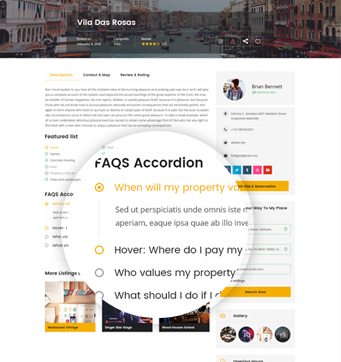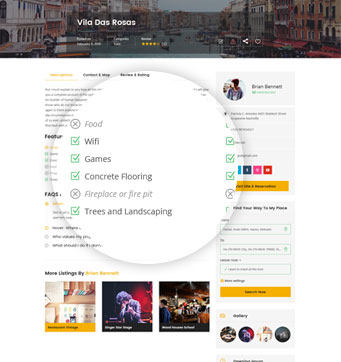Experiential Marketing: Crafting Immersive Brand Experiences
In the dynamic world of marketing, where traditional advertising methods are losing their grip, experiential marketing has emerged as a game-changer. This innovative approach focuses on creating immersive, interactive experiences that not only engage but also captivate your audience, fostering a deeper emotional connection with your brand. From interactive installations to cutting-edge virtual and augmented reality experiences, and strategic collaborations with influencers, experiential marketing is transforming the way brands connect with their audience.
The Evolution of Experiential Marketing
Experiential marketing has evolved significantly over the years, adapting to the changing landscape of consumer behavior and technological advancements. Initially, it was about creating memorable experiences through events, pop-up shows, and installations that allowed consumers to interact with brands in a meaningful way. Today, it extends to virtual and augmented reality experiences, offering consumers a new dimension of engagement and immersion. This evolution reflects the shift from a product-centric approach to a brand-centric one, where the focus is on creating experiences that resonate with consumers on a personal level.
The Heart of Experiential Marketing
At the core of experiential marketing lies the goal of creating a positive emotional connection between consumers and the brand. This connection is built through experiences that are not only memorable but also relevant to the brand’s values and offerings. By engaging consumers in a way that goes beyond the traditional advertising methods, experiential marketing aims to increase brand awareness, loyalty, and ultimately, sales. It’s about creating experiences that evoke emotions, build brand loyalty, and ensure effective customer engagement.
Planning Your Experiential Marketing Campaign
Planning an experiential marketing campaign is a meticulous process that requires careful consideration of various factors. It starts with defining clear marketing goals and metrics to measure performance. This ensures that the campaign aligns with the brand’s objectives and provides a framework for success. The planning phase also involves reviewing the environment to ensure compliance with laws and regulations, coordinating with the calendar to align with holidays and other predictable trends, and integrating the campaign into an omnichannel marketing strategy. This comprehensive approach ensures that the campaign is not only engaging but also seamlessly integrated into the brand’s overall marketing efforts.
The Power of Technology and Creativity
The success of an experiential marketing campaign hinges on the effective use of technology and creativity. Virtual and augmented reality technologies offer new avenues for engagement, allowing brands to create immersive experiences that are both innovative and memorable. Collaborations with influencers add a layer of authenticity and reach, ensuring that the campaign resonates with the target audience. The key is to create experiences that are not only visually appealing but also meaningful, aligning with the brand’s values and the audience’s interests.
After the Campaign: Measuring Success and Building Momentum
The journey of an experiential marketing campaign doesn’t end with the event. Post-campaign analysis is crucial for understanding the impact of the campaign on brand awareness, customer engagement, and sales. This involves analyzing data collected during the campaign, identifying what worked well, and what could be improved. The insights gained from this analysis are invaluable for planning future campaigns and ensuring that the brand continues to engage and captivate its audience. Additionally, leveraging social media and other owned marketing channels to share the campaign’s highlights and engage with the audience further enhances the campaign’s reach and impact.
Conclusion
Experiential marketing is more than just a trend; it’s a strategic approach that sets brands apart in the competitive marketplace. By creating immersive, interactive experiences that resonate with consumers on a personal level, brands can build a deeper emotional connection, foster brand loyalty, and drive sales. As marketers continue to explore new ways to engage with their audience, experiential marketing stands as a powerful tool for crafting memorable brand experiences that leave a lasting impression.
In the ever-evolving landscape of marketing, experiential marketing offers a unique opportunity for brands to stand out, connect with their audience in a meaningful way, and drive growth. By embracing this approach, brands can not only enhance their marketing efforts but also create a lasting impact on their audience, setting the stage for long-term success and loyalty.
Expanding Your Content Strategy
To further enhance your content strategy and ensure your blog posts resonate with your audience, consider the following tips:
– Engage Your Audience: Start by making a firm commitment to write in-depth blog posts filled with interesting and engaging content. Ask what questions your customers have that you are ideally suited to answer, or what problems you can solve and start blogging from there .
– Quality Over Quantity: Focus on quality, abundance, and depth in your blog. The long-term rewards of creating a high-quality, in-depth blog are substantial. As both your readers and Google get smarter, focusing on quality is the only way forward .
– Understand Your Audience: Use SEO tools to find trending topics, but it’s always better to understand your typical customer on a fundamental level. Once you have your topic, your title should position itself as answering your customer’s questions or providing valuable useful information .
– Effective Copywriting: Your introduction should cover what your blog will be exploring and the primary problem it will resolve for your customers. Ensure you’re adding value to every paragraph through research. Try to write short sentences with easier to read and understand words .
– Design and Layout: The design and layout of your blog post are critical to its engagement. Use complementary graphs and infographics to help your reader grasp your content or argument quickly and easily. Images are an essential asset for keeping the attention of your readers .
By incorporating these strategies into your experiential marketing campaigns, you can create more engaging, informative, and impactful content that not only captivates your audience but also drives action and fosters a deeper connection with your brand.






